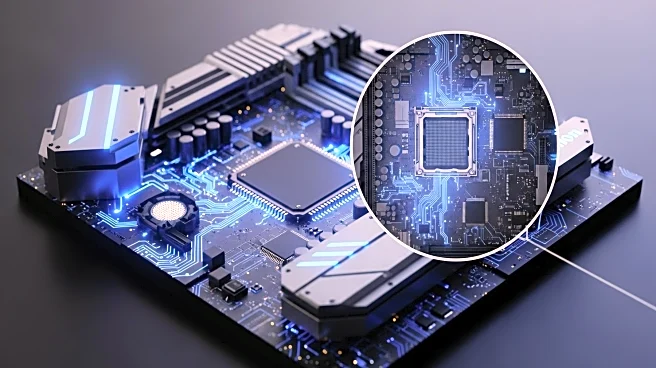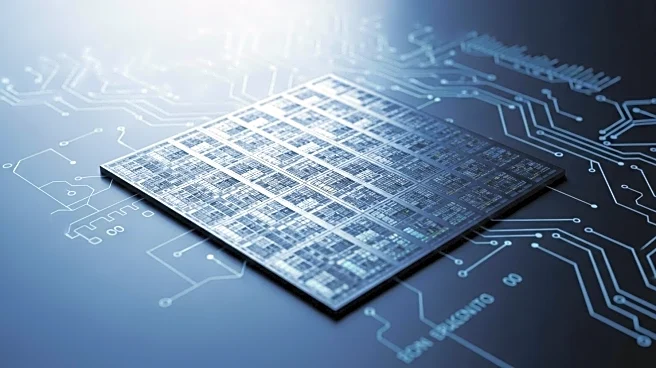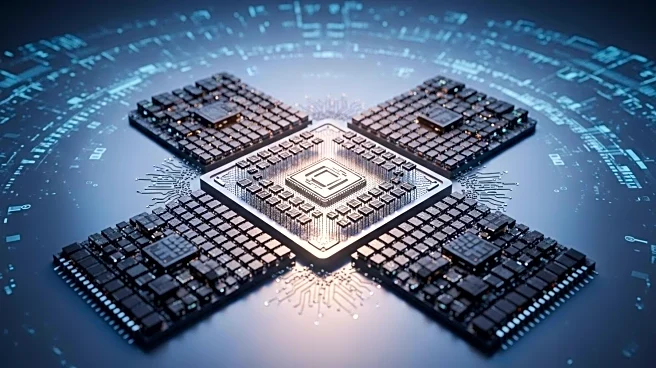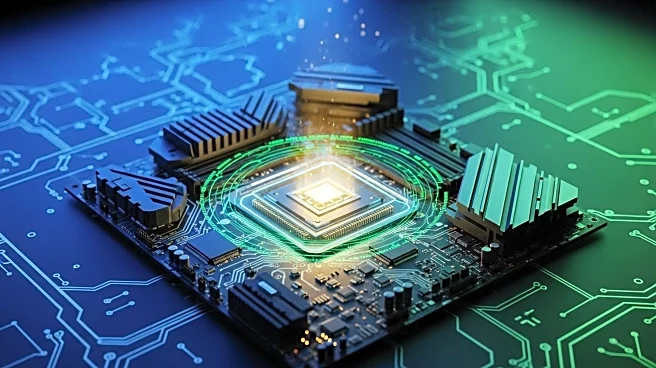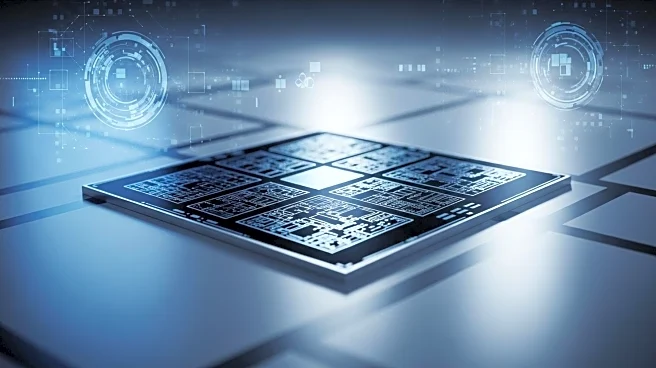What's Happening?
AMD has filed a patent for a 'High-Bandwidth DIMM (HB-DIMM)' for DDR5 memory, which could potentially double the data rate from approximately 6.4 Gbps to 12.8 Gbps per pin. This innovation involves adding buffer chips and 'pseudo' memory channels on the module, effectively creating two channels within a single stick. The patent suggests that this increase in bandwidth can be achieved without altering the existing DDR5 chips, using a register/clock driver (RCD) to route commands to two independent pseudo-channels. This development is aimed at addressing the growing demand for memory bandwidth in high-performance graphics processors and servers, which are outpacing the current improvements in DDR DRAM chips.
Why It's Important?
The potential doubling of RAM speed is significant for industries reliant on high-performance computing, such as AI, graphics processing, and data centers. As these sectors continue to grow, the demand for faster memory bandwidth becomes critical. AMD's innovation could provide a solution to the memory bottleneck that currently limits the performance of CPUs and GPUs. However, the adoption of this technology faces challenges, as it requires support from motherboard, chipset, and CPU manufacturers. The success of this patent could influence the future of memory technology and its integration into consumer and enterprise-level computing systems.
What's Next?
For AMD's HB-DIMM to become a reality, it would need to gain support from major industry players and potentially become a JEDEC standard. This would involve collaboration with companies like Intel, Samsung, and Micron. The timeline for this technology to reach the market is uncertain, and it may take years before it is available for consumer PCs. In the meantime, AMD may focus on securing industry partnerships and further developing the technology to ensure its feasibility and compatibility with existing systems.
Beyond the Headlines
The introduction of AMD's HB-DIMM could lead to a shift in how memory technology is developed and standardized. If successful, it could set a precedent for future innovations in memory bandwidth enhancement. This development also highlights the ongoing 'memory wars' in the tech industry, where companies are continuously seeking ways to overcome the limitations of current memory technologies. The impact of this patent could extend beyond immediate performance improvements, potentially influencing the design and architecture of future computing systems.

